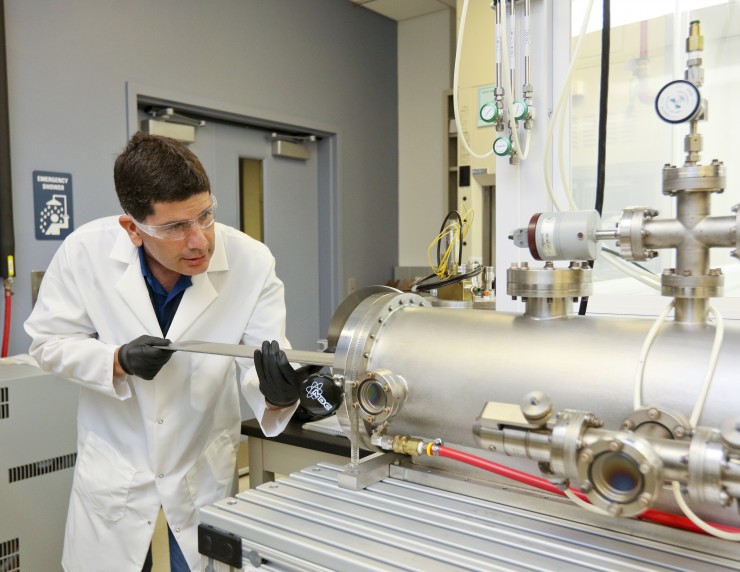
An ORNL-developed thin glass film with superhydrophobic properties repels water that carries away dust and dirt, reduces light reflection, and resists fingerprints and smudges. (Image by Oak Ridge National Laboratory)
Oak Ridge National Laboratory announced this fall that Samsung Electronics has exclusively licensed a technology that can improve the performance of glass displays on smart phones, tablets, and other electronic devices.
ORNL has developed a transparent coating that repels water, carrying away dust and dirt; reduces light reflection; and resists fingerprints and smudges. The optically clear superhydrophobic film technology was the result of about three years of superhydrophobic research on glass-based coatings, ORNL said in a press release.
“The thin nanostructured layer of porous glass film enables these combined properties, making it suitable for commercial applications,” said ORNL’s Tolga Aytug, co-inventor of the technology.
To be superhydrophobic, a surface must achieve a water droplet contact angle exceeding 150 degrees. ORNL’s coating has a contact angle of between 155 and 165 degrees, so water literally bounces off, taking away dust particles, the press release said.
The ORNL research team developed the superhydrophobic technology by depositing a thin glass film on a glass surface and heating the coated glass to transform the surface into two material compositions. A selective etching process produces a porous three-dimensional network of high-silica content glass that resembles microscopic coral and enables water-repellent and antireflective properties.
Beyond electronics, the technology holds significant potential for applications in solar panels, lenses, detectors, windows, and many other products, the press release said. The fields of solar panels and architectural windows are still available for licensing.
Aytug led the technology’s development in collaboration with ORNL co-inventors Parans Paranthaman, Daniela Bogorin, David Christen, Brian D’Urso, and John Simpson and was recognized with an R&D 100 Award in 2015. The work was supported by ORNL’s Laboratory Directed Research and Development Program and Technology Innovation Program.
See this ORNL page for a link to a video.

ORNL’s Tolga Aytug uses thermal processing and etching capabilities to produce a transparent superhydrophobic coating technology licensed by Samsung Electronics to improve the performance of glass displays on electronic devices. (Photo by Oak Ridge National Laboratory)
Do you appreciate this story or our work in general? If so, please consider a monthly subscription to Oak Ridge Today. See our Subscribe page here. Thank you for reading Oak Ridge Today.
Copyright 2016 Oak Ridge Today. All rights reserved. This material may not be published, broadcast, rewritten, or redistributed.
Leave a Reply